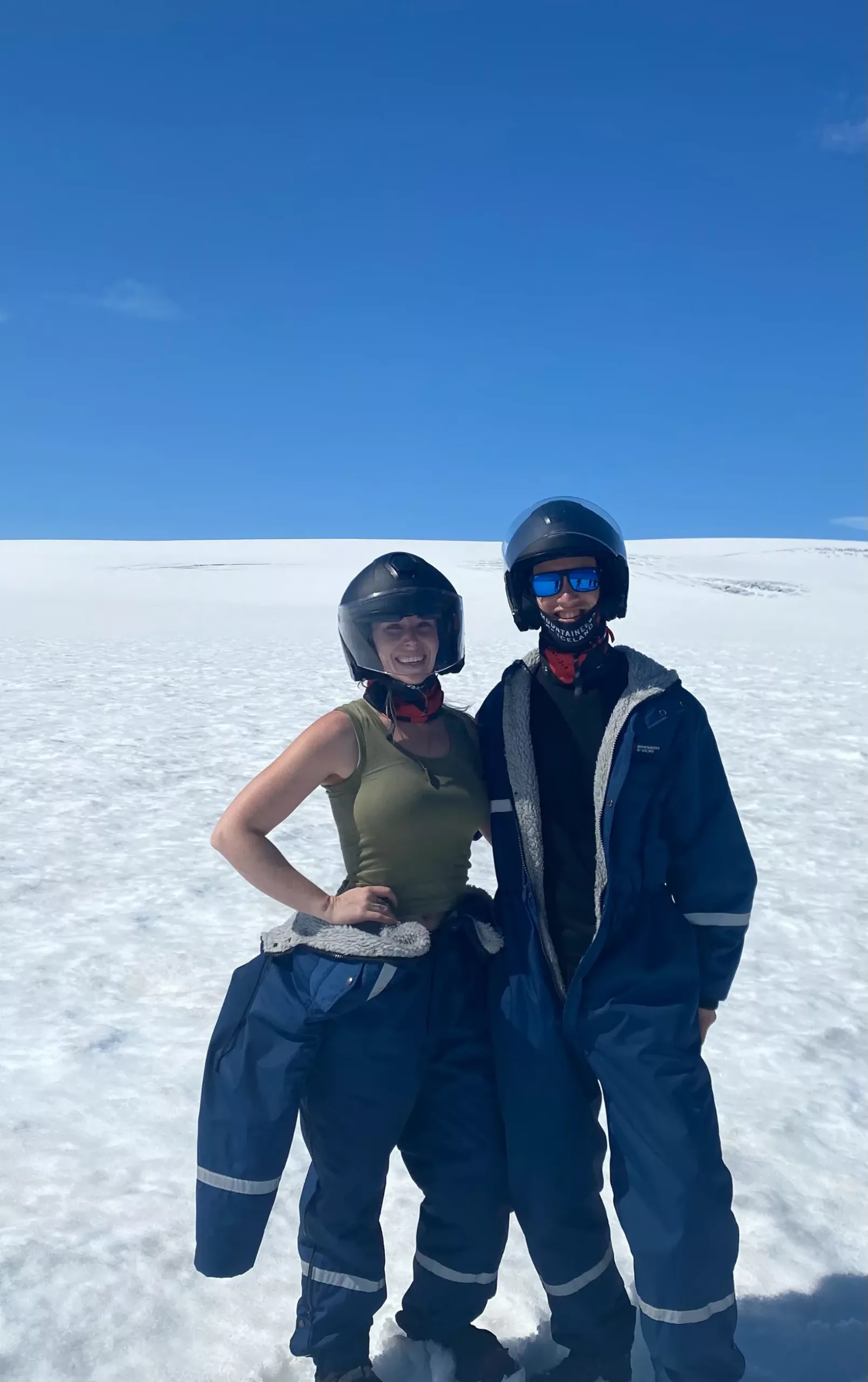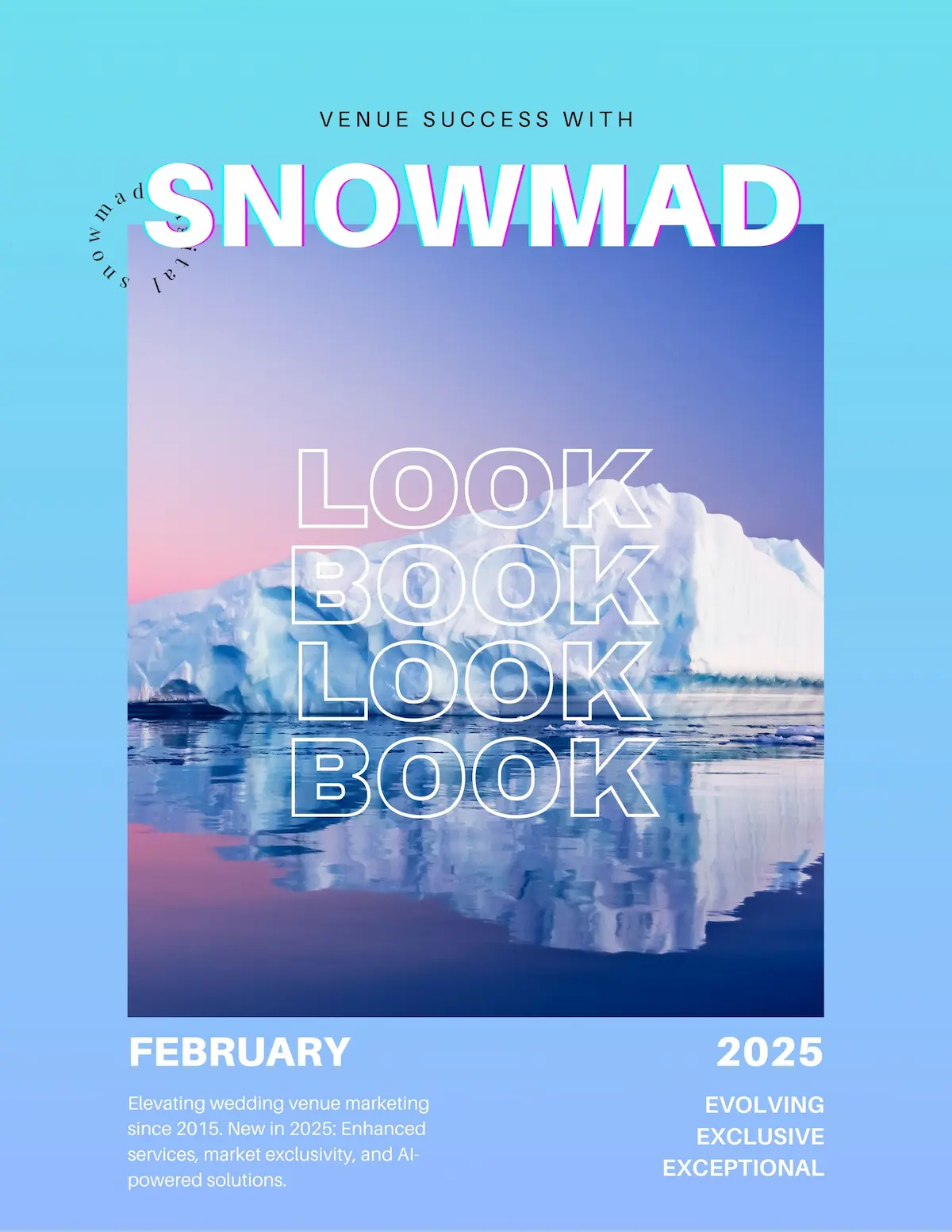If you’re anything like me, planning a trip to Iceland can seem daunting. There are SO many things to see and do, and it’s hard to know where to start. And how do you skip over the generic stuff (looking at you, Blue Lagoon) and skip to the secret spots?
I’ve got you covered with this comprehensive (yet flexible) Iceland itinerary, complete with excursions and tips for going off the beaten path.
So whether you want to plan your Icelandic adventure or get some ideas for what to do when you’re there, read on. I’ll share what I loved, liked, and what I felt was overrated.
P.S. – When I arrived in Iceland, I realized most photos I saw beforehand were heavily photoshopped. Mine are not photoshopped and were taken with an iPhone :)
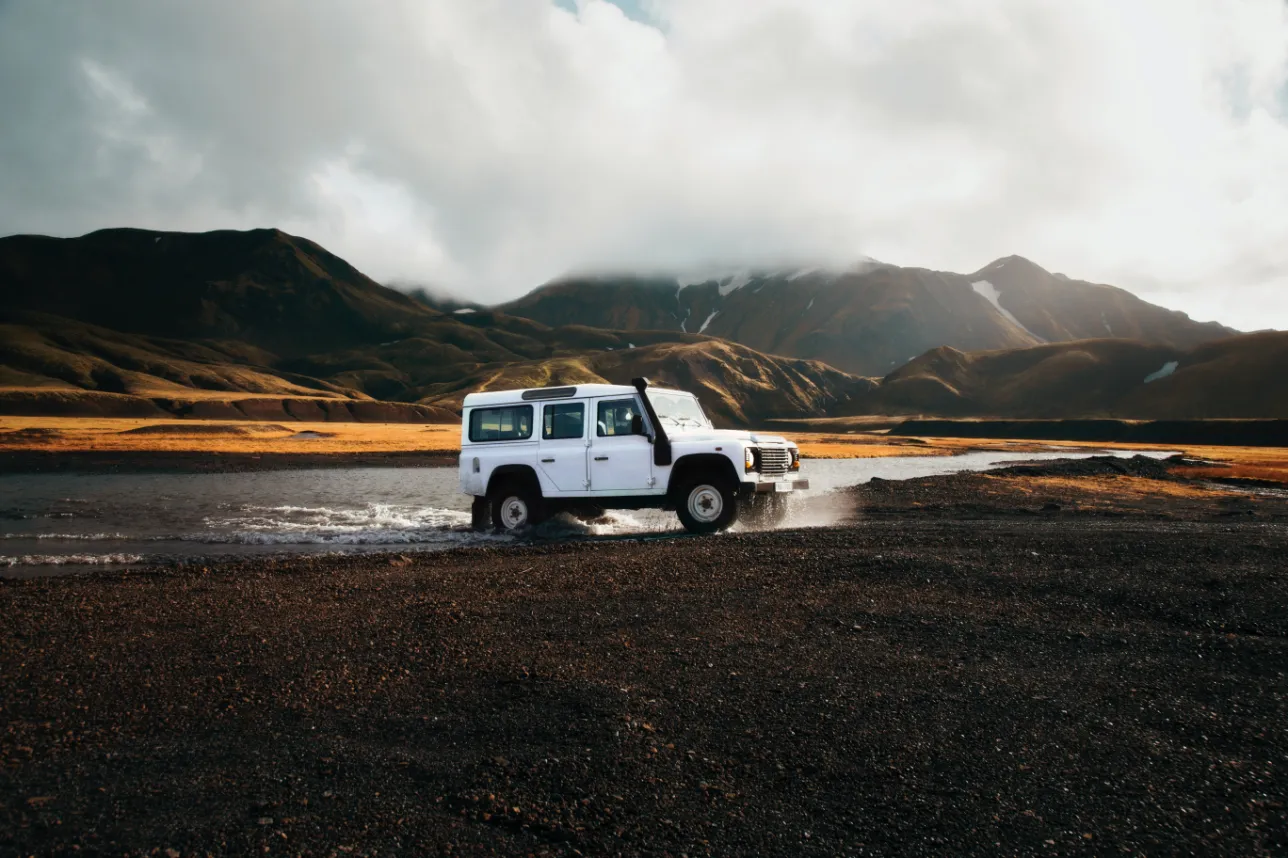
How much will a trip to Iceland cost?
How much will your trip to Iceland cost? Well that entirely depends if you are a budget traveller or not and what is on your travel itinerary. We slept at campgrounds, hiked, and only did a few guided tours and spent around $2,400 including food and gas, flights, 4×4 rental car with soft camper top, and accommodations.
The trip was 13 days and (would have) cost $2,928 total per person.
Here’s a breakdown of the costs:
-
- $685: flight round trip (airfare costs/trip airfare) from Durango, CO > Reykjavik
- $45: flight insurance
- $1,046: 4×4 rental car with tent (Dacia Duster) with full camping gear and unlimited WiFi (We did not use a camper rental company)
- $752: tours (paragliding, snowmobiling, glacial ice climbing, white water rafting)
- $400: accommodation prices (camp for eight nights, Airbnb for five nights)
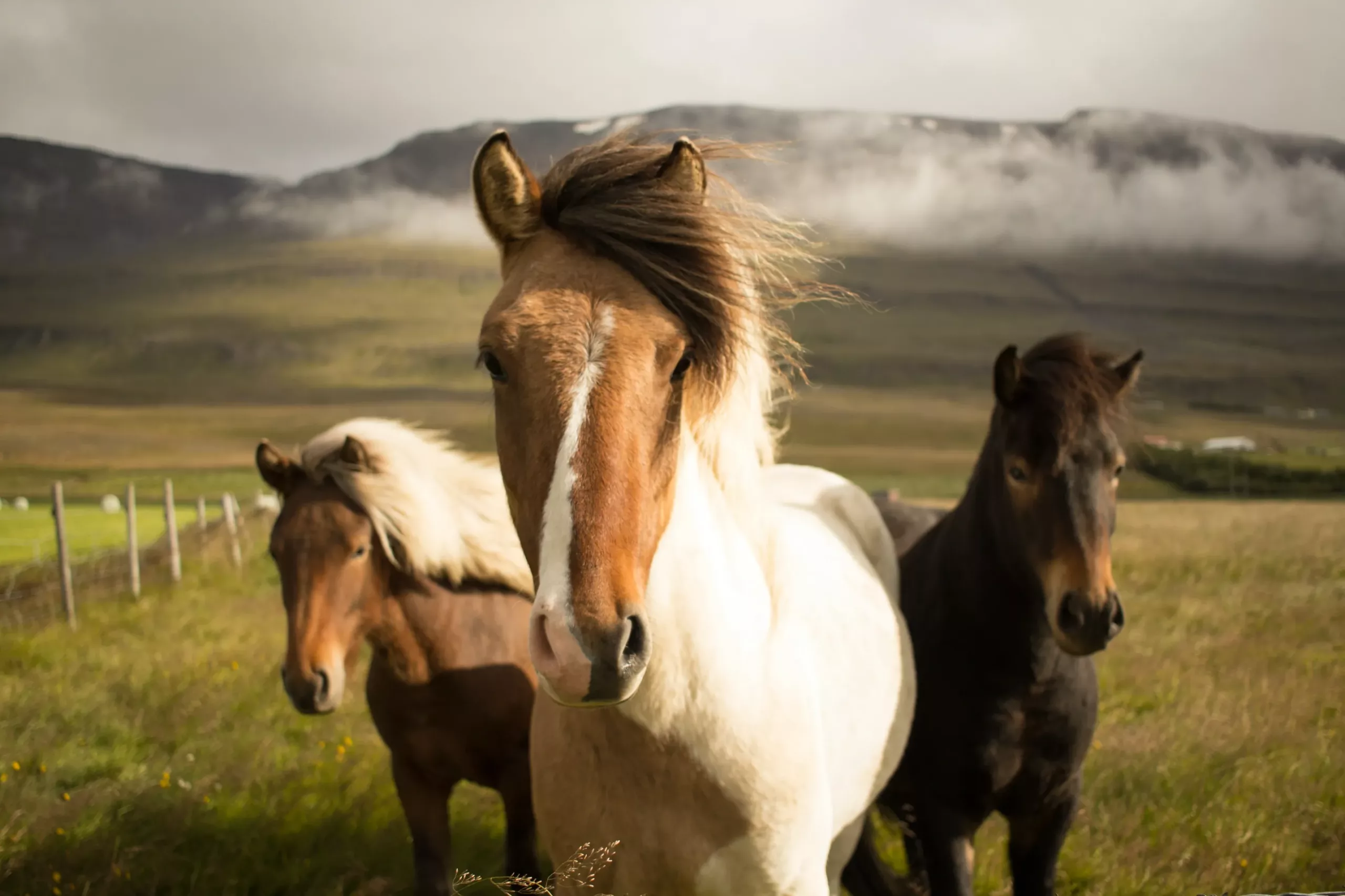
Day 1: Keflavik Int’l Airport > Geysir, Iceland
- Airbnb Check In
- Faxi Waterfall
- Gulfoss
- Geysir

- Fagradalsfjall eruption (not much left of it)
We took our trip around the time that the volcano was erupting. We arrived just after it stopped and it mainly was smoking, so there was no hot lava. Although we hadn’t slept in 24 hours, we hiked around here for a few hours before heading to our Airbnb in Geysir where we passed out for a few hours.

- faxi waterfall near geysir iceland
Around midnight, we got up to go check out the Faxi and Gulfoss waterfalls and more around Geysir.

- Gulfoss waterfall
Because we opted for a midnight trip, we saw no one except a very angry goose.

- huge goose near geysir iceland
The highlight for me was Faxi because it was so peaceful and serene. Gulfoss is a much bigger waterfall. I wasn’t super impressed with Geysir – it’s not much different than any other geothermal area (but this is Iceland, so it’s all about waterfalls & geothermal activity).
Day 2: Snowmobile Langjokull glacier + Off-Road to Thingvellir (Þingvellir)
- Snowmobile Langjokull Glacier
- F Road 338 & 550
- A quick stop in Thingvellir
- Road 365 back to Airbnb
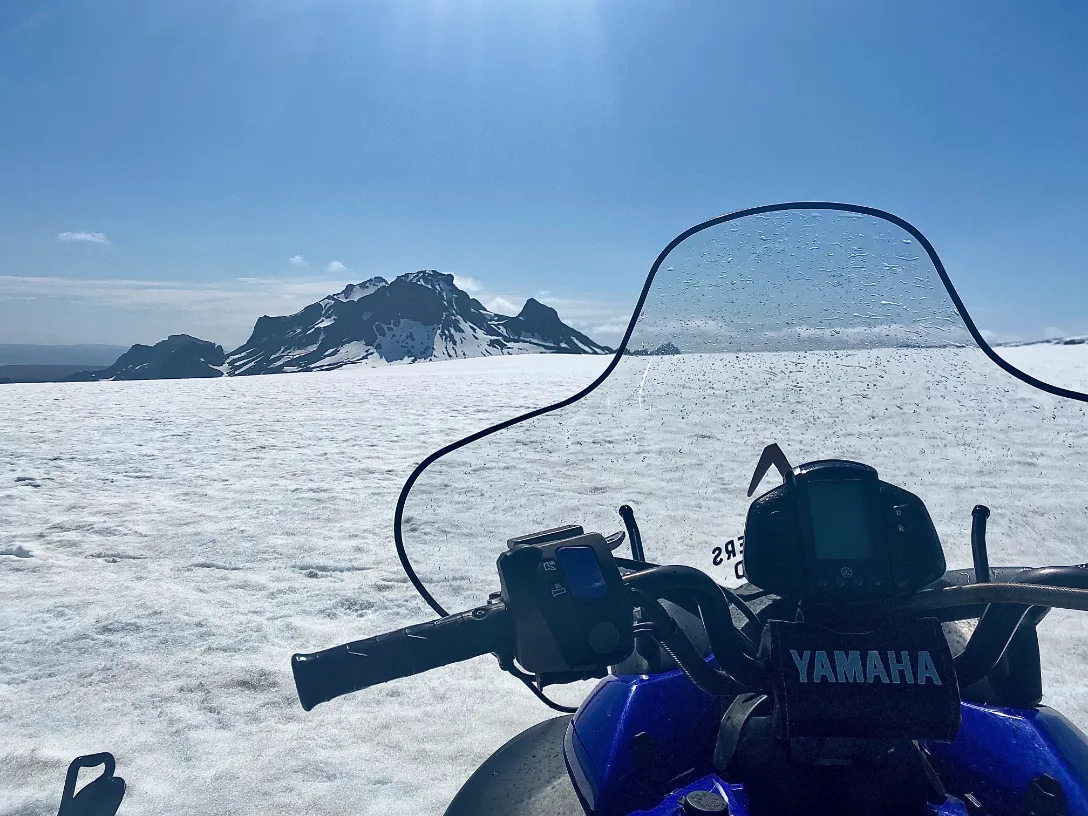
The snowmobile tour was breathtaking. If you have been on a sled before and are experienced, that part is not as fascinating. But the trip starts in a super rad off-road vehicle before you gear up and get on your sled. And it’s cool to say you rode on the Langjokull glacier in Iceland.

- View of the Snowmobile & off road vehicle on Langjokull Glacier
We stopped at a manmade ice cave along the trip before riding back. The ice cave tour was informative.

- Snowmobile Langjokull Glacier ice cave
After that, Jesse and I took an F Road (338 & 550) to Thingvellir, which was a bit sketchy but a fun drive with a few small river crossings. Thingvellir seemed more crowded but was beautiful, so we were glad we didn’t spend much more time here. I think most of the appeal is it’s proximity to Reykjavik.

- F Road 338 Iceland Langjokull Glacier
Day 3: Geysir > Brennisteinsalda Camping & Landmannalaugar
- Hjalparfoss
- Sigoldufoss
- Sigoldugljufur (cross the road to find it)
- F Road 26 & 208
- Hike Brennistalda

- Hjalparfoss iceland
This drive was breathtaking. We only had one semi-sketchy river crossing, but it depends on the snow that winter and how much it rains so be sure to check conditions. I’ve seen some of the most beautiful mountains with pristine reflections.

- Sigoldugljufur Iceland

- Sigoldufoss Iceland
We stopped at many waterfalls before getting to Brennisteinsalda to see the colorful, striped mountains of Landmannalaugar.

- panoarmic of Brennisteinsalda

- Landmannalaugar mountains colorful

- valley Landmannalaugar iceland
We spent about 5 hours hiking around before heading to the hot springs. Note: the hot springs were not that great and were mainly cold, with only a few “hot spots” :)
Also worth noting: there are lots of people who camp here. Someone will likely park near you and be noisy at night when you are trying to sleep. Keep those earbuds and eye masks handy.
Day 4 Brennisteinsalda Camping > Paragliding in Vik > Skaftafell Campground
- F208 south to Vik
- Easy gravel road with 20 river crossings
- Paragliding was canceled due to the weather
- Hike Hjorlenshofoi (hike up is steep) – park by the cave, hike up steep, back down the other side is pretty
- Fjadrarglujufur – super pretty but too crowded
- Stop and see various waterfalls and get to Skaftafell to camp
- Hike to see Svartifoss and Sjonarnipa

- F Road 26 Iceland

- F Road 208
This was one of the best drives of the trip. We had about 15 “river” crossings.
Since our paragliding was canceled due to foggy weather (a common occurrence here), we decided to check out the black sand beaches and a nearby cave. I wasn’t extremely impressed with the black sand beaches (the ones LATER ON are MUCH more awesome) or the cave hike, but it was a great way to spend our time. The cave hike (Hjorlenshofoi) proved to be a bit scary, for me at least. You must use the chains to pull yourself up because it is steep. Jesse had no issue though, so maybe it’s just me :)

- famous rock formations vik iceland
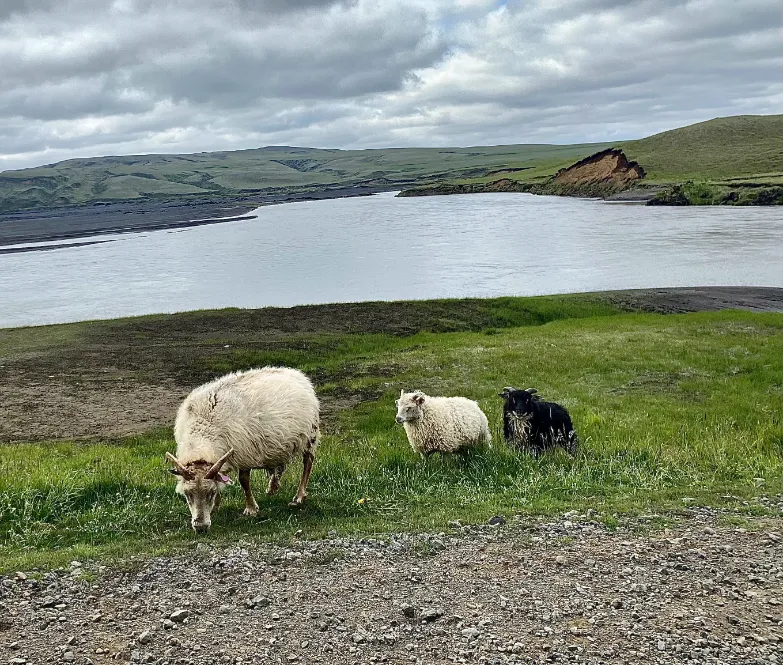

- Hjorlenshofoi
We did stop at Fjadrarglujufur, but if I could go back in time, I’d skip this altogether. Yes, it is beautiful, but so are many other places in Iceland. The vast herds of humans and noisy drones killed the appeal.

- Fjadrarglujufur another view
We continued our drive to Skaftafell, which was breathtaking. There are many other waterfalls to stop at along the way, and you can see them on Google Maps or right from the road. We started a hike around 9 PM to Svartifoss and Sjonarnipa (the big glacier). The highlight was spotting an arctic fox, but it was too dark to photograph as it blended in with the dark rocks.

- road to Skaftafell

- another veil waterfall on the drive to Skaftafell

- waterfall on drive to Skaftafell

- another view of the Sjonarnipa

- Svartifoss waterfall

- jesse at the Sjonarnipa

- Sjonarnipa flower buds

- Sjonarnipa glacier
Day 5: Skaftafell Campground > Vatnajokull & Diamond Beach > Haukafell Campground
- Ice Climbing & Glacier Hiking Tour on Vatnajokull
- Múlagljúfur
- Fjallsárlón
- Jökulsárlón Glacier Lagoon & Diamond Beach
- Camp at Haukafell Campground

- Vatnajokull glacier
If I could go back, I’d break this day up into two. Ice climbing was a fun journey, but if you’ve been ice climbing before, it’s not the ice climbing part that is exciting. It’s being on the glacier and getting to say you climbed the glacier :) The ice climbing tour was fun, and even better was getting beta from another couple to check out Múlagljúfur, which was one of the best parts of our trip.

- jesse ice climbing Vatnajokull

- elizabeth ice climbing Vatnajokull
We had difficulty figuring out where to park because NO ONE was there, so I took us off-piste. The way to get to Múlagljúfur is to hike down to the house, turn left at the river, and hike up the river to the waterfall. Unfortunately, I ended up heading right and bushwacked through the backside to the waterfall, which was cool but probably considered trespassing, so don’t be like us. We had so much fun hiking down the river using large rocks and seeing lots of obsidian. I didn’t take many photos because I was having too much fun.

- Mulagljufur waterfall

- Mulagljufur waterfall 2
There is tons of information online about Fjallsárlón, Jökulsárlón Glacier Lagoon & Diamond Beach so I won’t touch too much on that here. My only regret is not breaking this up to spend more time at Fjallsárlón, Jökulsárlón Glacier Lagoon & Diamond Beach.
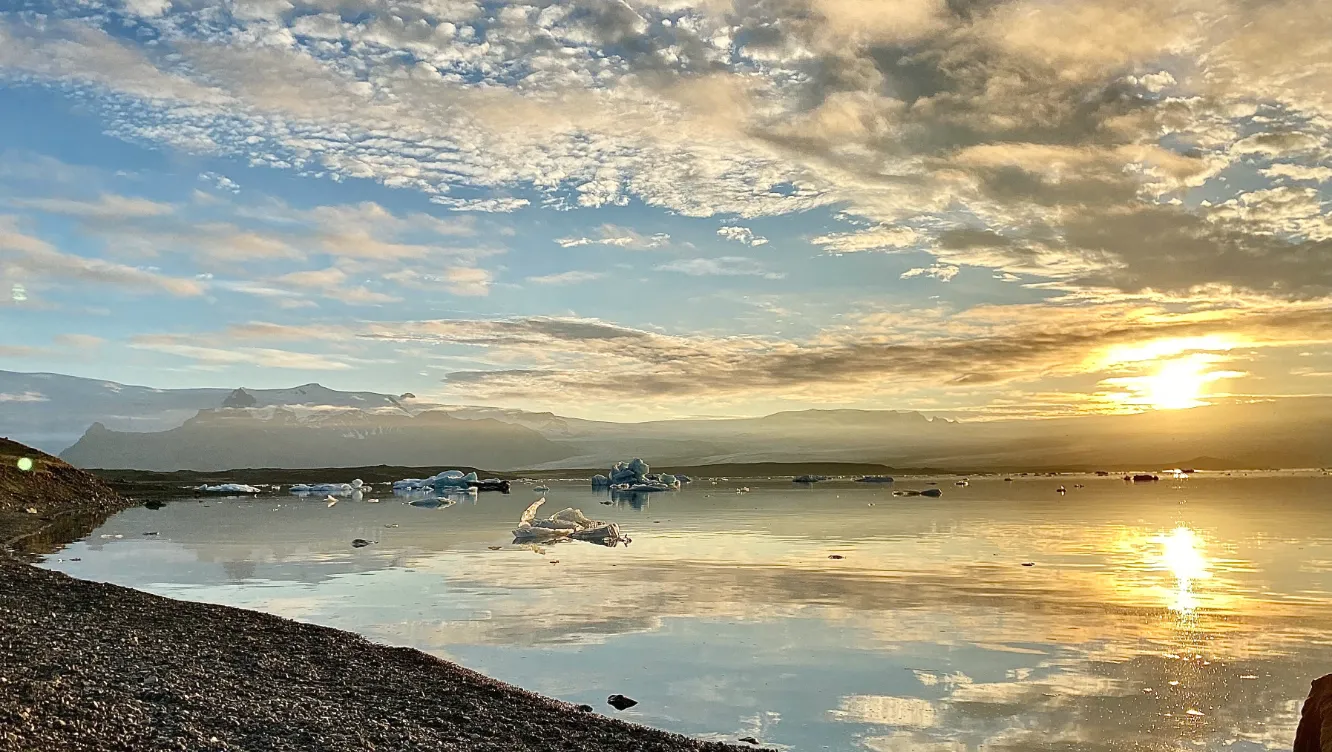

- Fjallsarlon
I loved watching the seals swim close to me and the icebergs break off. If I did my trip over, I’d spend at least a half day more here marveling at the beauty. We spent at least four hours enjoying the lagoons and Diamond Beach. Then, we camped at Haukafell Campground.

- Jokulsarlon Glacier Lagoon

- Diamond Beach 10

- Diamond Beach 5
PRO TIP: We used multiple flashlights to achieve this ~aesthetic~ with the ice on the beach.
Day 6: Haukafell Campground > F Roads 910 & 902 > Sigurðarskáli in Kverkfjöll
- Hofn for groceries (quaint coastal town)
- Nykurhylsfoss (Sveinsstekksfoss)
- Road 939
- Hengifoss and Litlanesfoss Hike
- F Road 910 (Austurleið) & 902 (Kverkfjallaleið)
- Camp at Sigurðarskáli in Kverkfjöll
What vacation is complete without a colossal mishap? Lol. Things could have gone SO wrong on this day, but luckily we made it out. Anyway…the day started innocently. We got some groceries in Hofn, a quaint coastal town, and headed to the Nykurhylsfoss waterfall.

- Nykurhylsfoss waterfall
The drive along the coast was magnificent, and we soon headed inland to road 939. This road was absolutely breathtaking, and we saw dozens of waterfalls along the drive. Then we turned at the 95, headed north, then headed back down the 931 along Lagarfljót lake.

- Lagarfljot lake
According to legend, the lake holds a beast called the Lagarfljót Wyrm, a cousin of the Loch Ness Monster. Unfortunately, we did not meet the beast, but the drive was incredible.
We had to stop and hike to see Hengifoss and Litlanesfoss where we met some local ladies named Rose, Olga, and Mary from Reykjavik. Mary was running barefoot and told us she was the best skier and runner in all of Iceland. They were quite the trio, and we continued driving the magnificent 910 to see the backside of the Vatnajokull glacier. We got out at the Kárahnjukar Dam to take some photos.

- Litlanesfoss waterfall

- Karahnjukar Dam
Soon, the 910 turned into the 902. It was getting late at night, and the road was increasingly challenging. We were tired and sleep-deprived, and the river crossings were much deeper. I started getting snappy, and Jesse stayed calm.

- F Road 901 on the way to Kverkfjoll

- drive to Kverkfjoll

- F ROAD 910
Our goal was to get to the backside of the Vatnajokull glacier and camp at Sigurðarskáli in Kverkfjöll. The landscape turned into a very bleak, desolate, Mars-like vibe. We knew we couldn’t stop and would be safer if we made it to the hut. We finally arrived at the campground around 2 AM.

- F Road 902

- Sigurdarskali in Kverkfjoll
Oh look, if it isn’t the consequences of my last-minute decisions. :)
If I could go back and redo the trip, I would entirely skip this part. The roads were scary and desolate, and I felt pretty alone. It was an extraordinary experience, but the glacier is off-limits, so there is not much to see, and it’s bleak. Looking back, it’s hilarious that my goal was to see the “backside of the glacier” and all the trouble we went to to see it, and in the end, we only got to see a small part of it. We did not get to see the ice cave because it was closed. Even if we could get to it, it was hemorrhaging glacier water.

- the backside of Vatnajokull

- glacial river backside of Vatnajokull
Please bring all fuel and supplies if you drive the F Road 902. If you break down, anyone will unlikely find you for at least a day or two.
Day 7: Sigurðarskáli in Kverkfjöll > Mývatn
- F Road 903 & 905
- Möðrudalur
- Dettifoss
- Mývatn
After much-needed sleep from our treacherous F-Road drive, we had much more fun driving during the daytime. It was relieving to see an actual vehicle since we hadn’t seen any since yesterday. We knew the roads better and what to expect and we had a ton of fun drifting in the sand. Our Dacia Duster put in the work for us on this trip. Anyway, slightly scorned by my poor choice of itinerary (LOL), we ended up at Möðrudalur, a cute village with turf houses.

- cute friend in Modrudalur

- signs in the town of Modrudalur
Then we finally reached the Ring Road (1) and headed to see Dettifoss. Honestly, I wasn’t as impressed with these waterfalls as others, but it might also be partially due to my scorn from the previous day :)

- dettifoss

- Detifoss waterfall
I decided that we had suffered enough, and since we hadn’t showered or seen the inside of a building since the second day, I booked us a room at the Birkilauf Guesthouse Mývatn. This proved to be one of my smarter choices on the trip and the host was very kind. I really enjoyed the vibe of the guesthouse.
From here, I wasn’t impressed much by the rolling hills on the drive or Mývatn. Again, there is a lot of geothermal activity where I live, so this might be more impressive for someone who hasn’t seen Yellowstone or other geothermal areas.
DAY 8: Mývatn > Siglufjörður > Bátafjör Bakkaflöt Campground
- Sightseeing around Mývatn
- Godafoss
- Gorgeous coastal and tunnel driving to Siglufjörður
- Fish and Chips Siglufjörður
- Bátafjör Bakkaflöt Campground
We slept in a bit this day and toured around Mývatn including the crater.

- Myvatn 1

- crater Myvatn
After deciding we had seen enough, we drove up to Siglufjörður, another gorgeous and scenic drive. We stopped to get fish & chips in Siglufjörður, then continued through the road tunnels. The ocean, mountains, and sheep running alongside the road added to the quaint blissfulness of this bucolic countryside.

- Siglufjordur drive views
We stopped to camp at Bátafjör Bakkaflöt Campground which also had an obstacle course. Jesse and I decided to walk around the obstacle course, and unfortunately, we walked near an Artic Tern’s nest (we didn’t see it) and subsequently were attacked by the bird.
Read this article to learn how to avoid getting attacked :)
That was plenty of excitement for the day, so we tucked in for the night to be rested for our rafting trip tomorrow.
Day 9: Bátafjör Bakkaflöt Campground > Viking Rafting, Varmahlíð, Iceland >Tjaldsvæðið Hveravellir
- Raft the East Jökulsá River
- F Road 35
- Hveravellir Geothermal Pool & Campground

- whitewater action in iceland
This. Rafting. Trip. Was. The. Best. Seriously.

- tour guides at viking rafting benji tarzan
It was one of the top highlights of my trip (did I say that already?) Viking Rafting does not mess around. They are one of the few, if not only, companies that take you to the East Jökulsá River which has some class III & IVs. Benji, Mark, and Tarzan were terrific guides.

- gorgeous canyon shot during our Viking Rafting trip
The rafting trip was 18km, and we definitely got pitted a few times. I was at the head of the raft, so I took the brunt of the force.

- viking rafting action
We stopped halfway for some waffles and hot chocolate, a nice treat. Then we pulled off to the side and got to cliff jump.
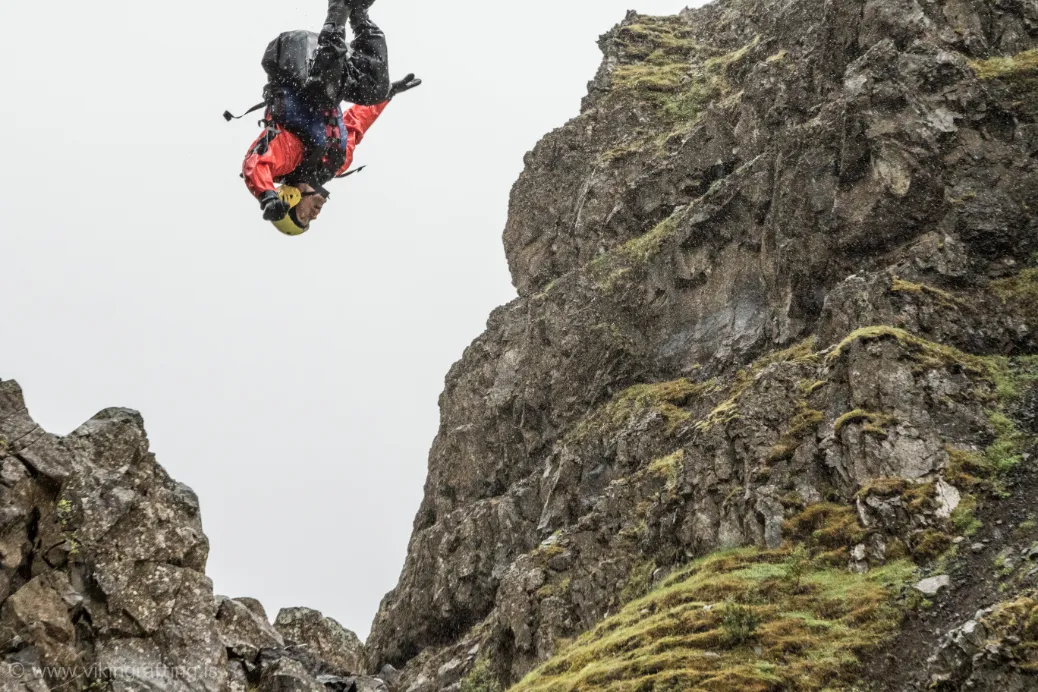
- cliff jumping on viking rafting tour
Most guide companies would be more reserved, but I was happy to FINALLY take a rafting trip on which I wasn’t bored. A few crew members complained about one section where they feared death, so at a minimum, don’t be a super jerry if you book this tour. Most of the guides were on small whitewater kayaks, and one guide even flipped, couldn’t roll, and ended up stuck under our raft. I ended up getting him out.
At the end of the trip, our bus broke down LOL, which added to the authenticity. They came back in a Landrover to pick us up and put the rafts on the back of the trailer, but then it popped their tire. I don’t even know how we made it back, but it was quite an adventure. Jesse had an Icelandic beer at the Viking Rafting headquarters before we headed to F Road 35 to Hveravellir Geothermal Pool.

- horses on farm f road 35
The drive was foggy but not tricky. Fog is to be expected in Iceland which of course, can obstruct views, so this was a little disappointing.
We made our way fairly quickly to the Hveravellir Geothermal Pool. I will be the first to say that I am NOT a huge fan of hot springs. Sitting around in warm water with naked strangers isn’t my cup of tea. But this….was DIFFERENT.
First of all, there was no one else in the hot springs. Also, I could control the water temperature because they literally had a PVC pipe feeding hot water into the pool. I opted for lobster-boiling temps much to Jesse’s demise. With incredible views, no tourists in sight, and absolutely relaxing water temperatures, it’s safe to say that this was one of the most relaxing days of the trip.
I didn’t bring my phone to the hot spring, and the drive was foggy, so I didn’t take any pics. I may add some from Unsplash later.
Not recommended, but Jesse and I snuck into the hostel/hotel for a shower. An irate lady was waiting outside for me, but she said nothing. Whoops. We stepped inside for some soup & food, but don’t recommend eating here because it was very overpriced and not that good. I expected it to be expensive, but I’m talking $60 for soup and potatoes.
To be fair, Iceland was not a food destination for us. We mostly ate grocery store food throughout the trip and only ate out twice or so. Most of our meals centered around the camp stove.
Not only did this keep costs down, but it also kept foodie disappointment at bay since most of our other trips (and my life) are centered around adventure + delicious food.
We spent most of the night wondering if we were tripping because we heard pan flutes all night and the wind was howling. We woke up to realize our stupidity and that it was, in fact, the aluminum ladder on our Dacia Duster. #daciapanfluteadventures
Day 10: Hveravellir > Kerlingarfjöll Base Camp
- F Road 35 and F Road 347
- Hveradalir Geothermal Area
- Camp at Highland Base at Kerlingarfjöll

- 6 Kerlingarfjoll mountains and Hveradalir geothermal area
It was once again a foggy day, so we didn’t get to enjoy the mountainscapes fully. The drive was not difficult, and we headed toward the Hveradalir. Instead of hiking up the geothermal area, we opted for 4×4 up the road

- 5 Kerlingarfjoll mountains and Hveradalir geothermal area
It was a little bit rough, but Jesse and I are experienced. The Hveradalir geothermal area was absolutely breathtaking, and it was totally worth visiting. I’d even say a hike up to it is worth it.
It was so windy in the highlands that I almost blew off the side a few times, so bring a neck gaiter and a windbreaker.
We headed back down to the Highland Base to camp. It was so windy that we ended up moving the mattress inside the Duster and sleeping inside. The weather was treacherous, so we spent the day reading, relaxing, organizing notes and photos, and sleeping.
Day 11: Kerlingarfjöll > Merkjárfoss Falls > Sólheimajökulll
- F Road 35 to Gluggafoss (Merkjárfoss)
- A quick drive by Seljalandsfoss
- Sólheimajökulll glacier sightseeing
- Camp outside Reykjavík
F35 is such a fun road to drive. We decided to check out the Merkjárfoss Falls which took us on our drive past where we started, near Geysir. The Merkjárfoss Falls are often overlooked; most people only see Gluggafoss, the window waterfall. Jesse and I opted to hike up and see all of the waterfalls along the Merkjá river.

- Gluggafoss
Over time, the water that falls from the waterfall is carved into the soft palagonite bedrock, and now it cascades through openings in this stone. The softness of this stone has caused the waterfall to change over time, and it flows through several windows and arches. It’s definitely a sight worth seeing.

- succulents at Merkjarfoss Falls

- powerful Merkjarfoss Falls

- Merkjarfoss Falls

- Merkjarfoss Falls view above

- Merkjarfoss Falls 2
After visiting the waterfalls, we headed back close to Vik where we visited the Sólheimajökulll glacier. We toured the glacier, visited a few ice caves, were awed at the beauty, and headed back to the car.

- Jesse looking out at Solheimajokulll glacier

- Solheimajokulll glacier and water
We stopped at some turf houses and a cave (Steinahellir) with a spooky tale.

- jesse entering the creepy cave before me because i was too spooky

- cool turf houses on the ring road
Since tomorrow was our last day, we decided to check out Reykjavík. We opted for a campground about 35km outside of Reykjavík.
Day 12: Reykjavík > Airbnb Near Airport
- Sightseeing in Reykjavík
- Airbnb near airport
I’ll be the first to say that Jesse and I are hippie rednecks…ish. I don’t know why I am always surprised that I am not impressed by touring a city, but I can certainly say that I was not very impressed with Reykjavík. Again we are not city people. You can read about Reykjavík online anywhere, so I’ll keep my comments short. We ate, messed around, then drove to our Airbnb near the airport.
We took our virtual Covid tests and sorted our things to fly out the next day. This Airbnb and the host were absolutely spectacular, and it was the perfect spot to rest before flying out.
Day 13: Fly Home to Durango
Pretty straightforward day. We presented our passports and Covid tests and flew back to Durango, CO.
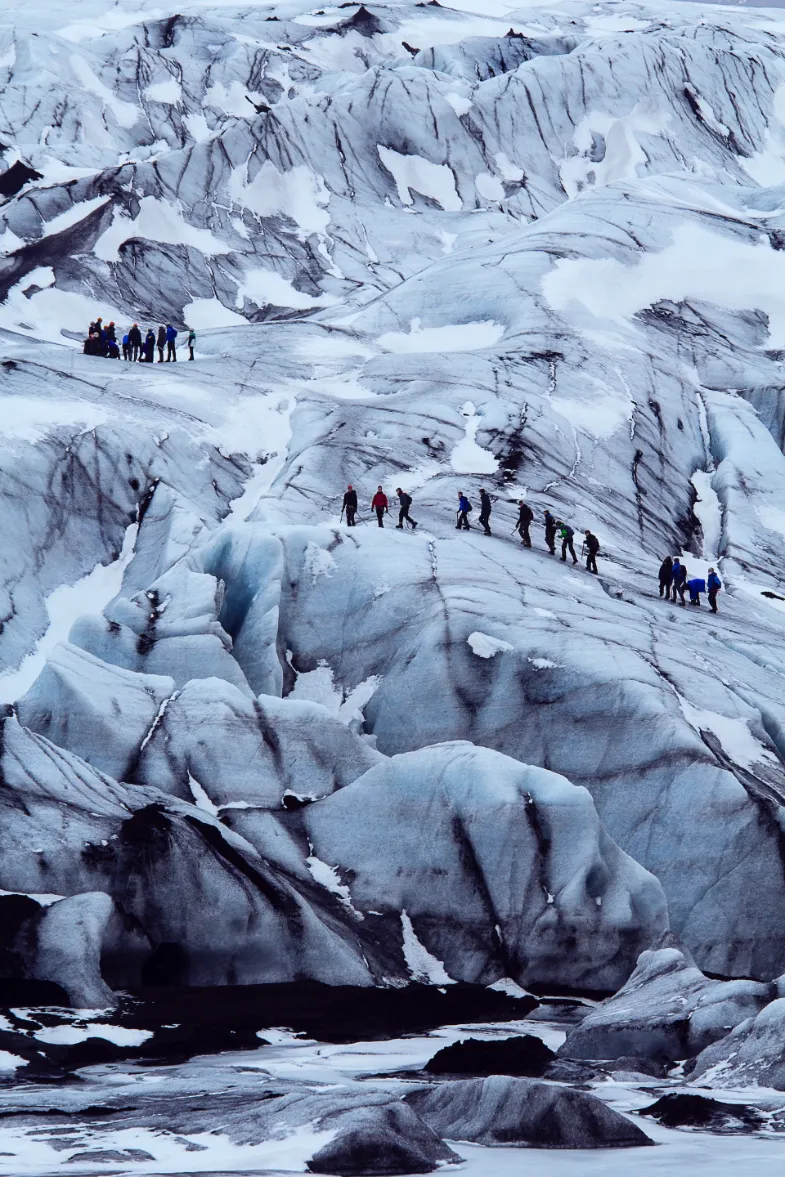
What was the best part:
- 4x4ing and the isolation away from the Ring Road. It was so crowded.
- Snowmobiling the glacier
- Brennistalda/ Landmannalaugar
- Glacier ice climbing
- Hiking down the river near Múlagljúfur
- Jokusarlon and Diamond Beach
- Skaftafell Glacier
- Guesthouse in Myvatn
- The scenic drive to Siglufjörður
- Bird trying to attack Jesse at the obstacle course (maybe not for him)
- RAFTING AND CLIFF JUMPING
- BIG ASS GEESE (do they take steroids?)
- 4×4 up to Hveradalir & Kerlingarfjöll
- Cute sheep along the roads
- Merkjarfoss falls
What was the worst part:
- Most of the Ring Road along the North/Northwest portion
- F Road 902/Sigurðarskáli in Kverkfjöll (funny story now, though)
- Seljalandsfoss – totally commercialized now and way overcrowded. Same with Fjaðrárgljúfur.
I completely modified the trip, removed Askja/more of the desolate area, and ended up moving our rafting trip up and canceling our time along the Northwest/West portion of the Ring Road. Why? I felt like I’d seen enough after driving F 905 & 902 lol. We ended up spending a lot less because our Airbnbs were 100% refunded and the paragliding trip was canceled, so we spent more like $2,400 including food and gas.
This trip could easily be stretched into a 16 day trip or more, but Jesse and I hike (and drive) fast. Whatever GPS/driving directions you have, add about 25% to that time or more if you are driving an F road, especially if you are inexperienced offroading. Most of the F roads were very easy except for 902.
Here are some “good to know” notes I took for the Iceland trip.
- Is known for speed traps & drive slow to avoid gravel kick up. Did I get a speeding ticket in the tunnel? No, but Jesse did :)
- You must have a 4×4 vehicle to drive F Roads.
- By law, you must always drive with your headlights on, even during the day.
- You cannot turn right on a red light.
- Park your car upwind. Both when short-term parking and overnight. Otherwise, it’ll get super noisy if you’re sleeping in your car tent or car.
- Grocery stores in Iceland are often small but relatively affordable. Your best bet is to stock up on food in Reykjavik or near the airport in Keflavik. Choose non-perishable items such as canned soup, freeze-dried foods, fruit such as apples, snacks such as pretzels, and dried fruit such as raisins. BONUS grocery store is Iceland’s cheapest supermarket.
- You don’t have to worry about tipping in Iceland – this goes for restaurants, bars, and even taxis. Gratuity is already built into the cost of the meal.
- Icelandic names can be confusing. Ex: Kerlingarfjöll is the mountain range, while Hveradalir is the actual geothermal area.
- To reach the red hills and steam vents of Hveradalir, you can either hike from Kerlingarfjöll Mountain Resort (1.5 hours), or if you have a 4X4 vehicle, drive up a steep dirt road to save time.
- Fill your gas tank before entering the highlands or any F Road.
Must-Have Carry-On Pack List for an Iceland Summer Trip:
- Melatonin
- Towel
- Travel-size soap, shampoo, conditioner, toothbrush
- Rain jacket
- Warm clothes
- Sneakers or hiking boots
- Face mask(s) if Covid is still a thing when you read this
- Sunscreen
- Camelback and/or Platypus
- Swimsuit & flops
- Gloves, beanie
- Layers
- European electrical adapter
- Face mask for eyes (earbuds)
What you need to consider when planning your trip to Iceland
Transportation
Exploring Iceland can be a wonderful and unique experience, but it is essential to consider the best transportation options for your trip. Depending on the type of vacation you’re looking for, you may want to consider airport transfers, guided tours, self-drive, guided small groups, privately guided, multi-day tours, independent tours, escorted tours, independent vacations, rail tours, river cruises, small ship tours, and tour and cruises.
Accommodation
When finding accommodation in Iceland, there are several options to choose from. You can find everything from cheap hostels and budget Bed & Breakfast accommodations to luxury apartments and countryside hotels. It’s essential to book your accommodations well in advance, as Iceland is a small country with a low population and the selection of accommodations is limited.
Weather
The weather conditions in Iceland vary throughout the year. During the summer months of July and August, the days are long with average temperatures in the 50s and 60s (Fahrenheit). The sun typically rises at 3 a.m. and sets around midnight, giving you 20+ hours of daylight. In the winter season, which extends from October to March, the days are shorter and precipitation is at its peak. The southern and western parts of the island generally receive the maximum rainfall. Despite its name, Icelandic winters are not cold due (depending on who you ask) to the warming influence of the North Atlantic currents, with average temperatures around 32F in the south and 14F in the north.
Quick Travel Tips
What are some travel tips for visiting Iceland?
- Travel in the winter (October to April) to save money on airfare, accommodation, and car rental.
- Travel with a friend to split the costs.
- Book your trip early to secure good, affordable accommodation.
- Spend limited or no time in the most expensive destinations.
- Consider staying in guesthouses with shared bathrooms.
- Consider hostels or Airbnb rentals.
- Look into camping and cabins at campgrounds.
- Use a credit card with car insurance coverage.
- Rent a car with manual transmission.
- Don’t take Icelandic króna out at the ATM.
- Pack carry-on only to avoid luggage fees.
- Self-cater meals by shopping at grocery stores.
- Eat at gas stations.
- Bring a water bottle and refill it in the rivers and streams.
- Visit free natural attractions.
- Hike as much as you can.
Tours of the North and West Fjords
The North and West Fjords are remote and largely untouched regions of Iceland, dotted with stunning vistas and rugged landscapes. Tours of these areas offer the opportunity to explore the wild nature of the North and West fjords, offering a unique and unforgettable experience.
These tours will introduce you to Iceland’s beautiful nature, take you along winding paths, and provide plenty of opportunities to take in stunning views and wildlife.
Tour of the Golden Circle
The Golden Circle tour is a popular sightseeing route in Iceland that includes Þingvellir National Park, Haukadalur geothermal valley, Gullfoss waterfall, the Blue Lagoon, and Lake Mývatn Nature Baths, Jökulsárlón glacier lagoon, Reykjavík, Strokkur geyser, and Geysir hot springs.
The tour provides visitors with the opportunity to witness the thundering power of Gullfoss waterfall, relax in the geothermal waters of the Blue Lagoon and Lake Mývatn, walk alongside huge shining ‘diamonds’ on the Jökulsárlón Glacier Lagoon, experience thrilling whale watching excursion, taste delicious locally sourced Icelandic cuisine, hunt down the aurora borealis on a guided northern lights tour, and hike up the hilly paths of Þingvellir National Park.
Ice Caving Tours
Ice caving tours in Iceland are truly one-of-a-kind experiences that take you into the depths of a glacier, often providing a unique sense of wonder and awe. Whether you’re exploring a naturally formed ice cave or a man-made ice tunnel, you’ll be surrounded by the picturesque beauty of Icelandic glaciers, rolling snow-capped hills, and jagged peaks. Plus, you’ll experience winter in all its glory when embarking on a multiple-day tour. You’ll be able to snowmobile on a glacier, go on hikes, and search for the elusive Northern Lights. No matter your tour, you’ll have a truly unforgettable experience.
Icelandic Horse Riding
Icelandic horse riding is a popular form of horseback riding unique to Iceland. It is known for its pleasant, gentle, and friendly breeds of horses and its stunning natural landscapes. Icelandic horse riding is a great way to explore the country’s dramatic terrain and catch glimpses of its mythical trolls.
Tours and packages are available for beginner and experienced riders of all ages, starting from five years old.
Create an itinerary that takes you off the beaten path in Iceland
Consider weather conditions
The weather in Iceland can be notoriously unpredictable, making it difficult to plan an itinerary for the country. For this reason, it is essential to prepare for all types of weather and come prepared with extra layers and waterproofs. When driving in Iceland, one should be aware of the unique climate conditions and be prepared for sudden changes in weather, such as fog, heavy rain, or wind and storms.
If you are inexperienced with driving in snowy and icy roads, it is best to avoid renting a car and instead opt for an organized group tour. This can save time and energy you would otherwise have to put into navigating unfamiliar places and dangerous conditions. An organized tour guide will also be more aware of the daily weather forecasts and will be better able to adjust the itinerary accordingly.
In addition, speed limits should be observed and wild camping should be avoided as it is now banned in the country. It is necessary to avoid cliff edges and surf as they can be dangerous, and it is important to respect any barriers that have been put up.
If unexpected weather or events occur during the itinerary, Adventures.com offers an emergency 24/7 helpline to help change the itinerary and re-book activities. This can ensure that your trip to Iceland will be enjoyable and safe.
Tips and tricks for having the most memorable experience possible with a tour or excursion
There are so many sightseeing locations and you don’t need someone to tell it to you because you have the almighty Google. For instance, we opted to skip the whale watching capital, Husavik, because Jesse and I are not really “whale watching people”.
You can research many sightseeing opportunities, glacier hiking locations, visitor attractions, and more on Google. Just be careful of people who fluff up their blogs and overdramatize or blab on about overrated areas.
Research the tour or excursion thoroughly beforehand
Step 1: Decide the time of year you would like to visit and the type of tour you would like to go on, whether it be a self-driven or guided tour.
Step 2: Research the locations you would like to visit and the attractions you would like to visit.
Step 3: Book a travel package with a trusted tour operator like Nordic Visitor. They will provide you with an experienced local guide who is knowledgeable about the area and can recommend places to visit, restaurants to eat at, and hotels to stay at.
Step 4: Ask your tour operator for any recommendations they may have on optional attractions or activities.
Step 5: Contact your dedicated travel consultant with any questions and ensure that you have all of the necessary information and documents for your trip.
Step 6: Check the flights and other available transportation options and ensure you book your package first to secure your preferred dates.
Look for reviews and testimonials from previous participants.
Seeing reviews can help participants know what to expect in terms of accommodations, attractions, activities, and meals to better prepare for their trip. Additionally, reviews and testimonials can provide participants with valuable advice on where and what to do during their trip to get the most out of the experience.
Consider the level of difficulty of the tour or excursion.
The difficulty level should be considered when booking a tour or excursion in Iceland to ensure a pleasant experience. For those looking for a more challenging experience, self-drive tours allow travelers to explore the wilderness at their own pace. Multi-day tours and camping tours offer the opportunity to explore further, for up to two weeks, with all the necessary transport, accommodation, and attractions included.
Those looking for a less strenuous tour can opt for a guided group or private tour, which can be tailored to specific interests, with an expert guide to provide insight into the local culture and wildlife. Additionally, certain activities such as glacier trekking and caving can be more physically demanding than others and should be considered when planning a tour. These factors should be considered when deciding what kind of tour is right for you and your desired difficulty level.
Iceland Trip FAQ
What are the best attractions in Iceland?
Iceland is home to some of the most awe-inspiring attractions in the world. Iceland is a bucket-list destination for every traveler from the stunning Blue Lagoon to the iconic Jökulsárlón glacier lagoon and the majestic Gullfoss waterfall. Other must-see attractions include Þingvellir National Park, Reykjavík, the Central Highlands, and Látrabjarg.
The famous Golden Circle is the most popular sightseeing route in the country and includes Þingvellir National Park, the Haukadalur geothermal valley, and the Gullfoss waterfall. At Þingvellir, visitors can witness the area’s stunning natural beauty and explore the first Icelandic parliament. The Haukadalur valley is home to the famous hot springs Strokkur and Geysir, while Gullfoss is a two-story cascade whose spray can be seen illuminated by a rainbow.
The Ring Road is an epic adventure that takes you around the circumference of Iceland, passing through majestic lava fields, thundering waterfalls, and otherworldly scenery. The colorful capital of Reykjavík is also a must-see, offering delicious local cuisine, vibrant streets, and the towering Hallgrímskirkja church. For a relaxing time, visitors can also soak in the mineral-rich waters of the Blue Lagoon, as well as the Lake Mývatn Nature Baths.
If you’re looking to spot the spectacular Northern Lights, you can join a guided 4×4 super-jeep tour or a whale-watching excursion from the charming fishing village of Húsavík. With so much to see and do, Iceland is a destination like no other and an unforgettable experience for every traveler.
What types of accommodation are available in Iceland?
In Iceland, there are various types of accommodation available for travelers. For those looking for a budget-friendly option, there are hostels, Bed & Breakfast accommodations, and rustic guesthouses. There are boutique and countryside hotels and apartments for those looking for something a little more luxurious.
What are the best hiking trips in Iceland?
What are the best hiking trips in Iceland?
From glacier treks to whale watching, there are many activities to experience in Iceland. If you’re looking for a hiking adventure, you can explore quaint towns rich in history or venture down roads only the locals know. Here are some of the best hiking trips in Iceland, complete with spatial information:
• Thingvellir National Park – Enjoy a walk through this National Park in the southwestern part of Iceland.
• Látrabjarg Cliffs – Venture to the westernmost part of Iceland and trek the rugged Látrabjarg cliffs.
• Hvítá River – Go river rafting down the Hvítá river, located in the south of Iceland.
• Silfra Ravine – Snorkel through this famous Silfra ravine, located in the Þingvellir National Park.
• Ísafjörðu – Kayak between the fjords of Ísafjörðu, a fishing village located in the north-west part of Iceland.
What rental car companies are available in Iceland?
When traveling around Iceland, you can rent a car from several companies. Avis Rent a Car is a popular option, as they offer cars with a few scratches at a relatively low cost and the convenience of airport collection/drop off. They will also take a percentage of the total as a deposit when you book, and the remainder is paid on arrival or taken from your card at the end of the trip.
For those who prefer flexibility and spontaneity, self-driven tours are also available. Companies such as Get Your Guide offer tours like the Golden Circle tour, whale watching on a luxury yacht, and Jökulsárlón Glacier Lagoon.
For those who prefer to stay in Reykjavik, Hotel Leifur Eiriksson is an affordable option. It is recommended to book a rental car for this option, as it is outside of the city center.
In conclusion, many rental car companies in Iceland offer competitive prices and various packages. Depending on the type of experience you are looking for, you can choose between self-driven tours and car rentals or stay in Reykjavik and take day tours.
What is the cost of accommodation in Iceland?
Accommodation in Iceland can vary significantly depending on the type of accommodation, the season, and the location. On average, a budget traveler can expect to pay $40-60 per person per night in shoulder season or $60-80 in the high season while staying in hostels or splitting the cost of a private room in an Airbnb or a basic guesthouse or hotel. For a more traditional hotel route, 3-star hotels will average around $200 per night, with varying prices depending on the season and type of room booked. Campervans are another popular choice among budget travelers, with prices for a basic manual-transmission van that sleeps two starting at around $100/day, with discounts if you travel outside peak season.
What is the cost of airfare to Iceland?
The cost of airfare to Iceland depends on when you book and where you’re flying from. For instance, Delta Air Lines offered a flight and accommodation package six months in advance with a $25 Expedia+ coupon. On the other hand, a round-trip ticket from New York City to Reykjavík with Icelandair cost $273.45 USD three months before departure. If you fly with budget airlines like EasyJet or Ryanair, you can find flights for under $114.
What is the best way to explore Iceland?
The best way to explore Iceland is to rent a car, take a tour from Reykjavik or join a glacier exploration.
We recommend hiring a 4WD car for bumpy gravel roads in the Westfjords, but it’s not necessary for most Iceland trips. Alternatively, you can rent a campervan for summer tours, but only park in designated camping zones.
Alternatively, you can take day tours from Reykjavik. You can get a shuttle bus from the airport and explore the most popular trips such as the Golden Circle tour, whale watching on a luxury yacht, JökulsárlónGlacier Lagoon and more.
Finally, you can join a glacier exploration to experience 11% of Iceland’s landmass covered with ice caps. You can explore the glaciers Langjökull, Vatnajökull, Mýrdalsjökull and Sólheimajökull by snowmobile, in a super jeep or by foot. You can also take tours to natural ice caves or a man-made ice tunnel.
Choose a privately guided tour for added privacy and the opportunity to have an expert guide to yourself or your traveling party. This way, you get the freedom from having your vehicle and the opportunity to set your pace and spend as long as you want at each location.
What are the best whale-watching tours in Iceland?
When it comes to experiencing the majestic wildlife of Iceland, whale watching is one of the most popular activities. Whether you’re looking for a short trip from Reykjavik or a longer excursion from Akureyri or Húsavík, there are plenty of tour operators to choose from.
What are the best glaciers to explore in Iceland?
There are many incredible locations to choose from when planning a glacier exploration trip in Iceland. From glacier hiking on Langjökull, Vatnajökull, Mýrdalsjökull and Sólheimajökull to exploring natural ice caves or a man-made ice tunnel, there are so many unique and unforgettable options.
For a winter multiple-day tour, you can experience Vatnajökull Glacier, see the Northern Lights, snowmobile on a glacier and more. If you’re looking to explore the east, Iceland’s glacier lake of Jökulsárlón is a must-see, and you can even take a boat trip into its impressive ice caves. Suppose you’re looking for a day tour.
In that case, the popular Snæfellsnes Peninsula, South Iceland, and Northern Lights tour will take you to the legendary peninsula and provide opportunities to see the ethereal colors of the Northern Lights.
Other popular spots on any Iceland tour are Hallgrímskirkja Church, Jökulsárlón Glacier Lagoon, Gullfoss, Geysir and the Ring Road. Finally, don’t forget to take a break and soak in the geothermal baths of Mývatn. With so many incredible glaciers and activities, Iceland is the perfect place for a glacier exploration vacation.
What is the best way to go off the beaten path in Iceland?
The best way to explore the off-beaten path in Iceland is to rent a car and do a self-drive tour around the country. This way, you will be free to set your own pace and spend as much time as you want at each location as you drive around Iceland. You can also use Google Maps for directions and cell phone signals.
Another option is to take a guided tour, whether a small group or a private one. Guided tours will offer insight into the local perspective and the opportunity to visit hidden gem locations.
If you want to make the most of your trip, plan and think about the activities you want to do while in Iceland. Before you book your tour, research the places you want to visit, decide your comfort level when it comes to driving, and think about what tour best suits your needs. Whether you self-drive or take a guided tour, you will have a fantastic experience off the beaten path in Iceland.
Are There Any Iceland Travel Restrictions in 2023?
Yes, there are travel restrictions in Iceland in 2023. All travelers must present a negative PCR test taken within 72 hours of arrival and are required to complete an online health questionnaire. All travelers must also abide by the Icelandic pledge and take responsibility for their safety and the safety of others. Tourists must also consider the different seasons when planning their trip – spring, summer, autumn, and winter – as this may affect their itinerary.
When is the Best Time to Visit Iceland?
When deciding the best time to visit Iceland, it depends on what you’re looking for. If you’re looking to experience natural wonders and drive the Ring Road, the period from early June to late August is ideal. Temperatures are mild, and the sun sets for only three hours. On the other hand, if you’re looking for the best chance to see the Northern Lights, then September through March is optimal; however, temperatures can be cold, and daylight is only five hours.
In the shoulder months of April/May (spring) and September/October (autumn), you can get more bang for your buck, but you need to be prepared for cold weather. For the ultimate winter experience, visit in November to March. With cold temperatures, limited daylight, and the possibility of snowy roads, you can experience winter activities such as ice caves and dog sledding and have the best chance of seeing the Northern Lights.
How Long Should You Spend in Iceland?
How long should you spend in Iceland? This depends on what you want to see and experience. For a chance to see the main attractions, like Jökulsárlón Glacier Lagoon and Goðafoss Waterfall, I recommend at least 7 or 8 days. If you have less time, 4 or 5-day itineraries are possible.
For a leisurely trip, 10-14 days is ideal for exploring all the natural attractions and charming coastal towns. One week is the minimum if you’d like to drive the entire Ring Road, but 10-14 days is better for the whole experience. For the Golden Circle alone, you can spend 1-2 days.
What’s the Best Way to Travel in Iceland?
The best way to travel in Iceland depends on what attractions you want to see and when you plan to visit. A self-drive tour is the best way to go for added privacy and independence. You can find a great deal on a rental car at Rental Cars. Wintertime drivers should be sure to rent a 4WD vehicle, as roads can be slippery. For those who don’t want to drive, there are plenty of guided day tours from Reykjavik. Get Your Guide offers a variety of trips such as whale watching, the famous Golden Circle tour, and Jökulsárlón Glacier Lagoon. Look out for deals from Icelandair and WOW Air for affordable flights to Reykjavik. Bring the proper clothing for all four seasons and a thermal base layer for the winter months. Lastly, only use experienced guides for glacier tours for added safety and adventure.
Before You Arrive in Iceland
Before visiting Iceland, there are a few considerations to keep in mind. Firstly, plan your trip and book your flight at least one day before the travel package starts. Check up-to-date weather forecasts to ensure you’re prepared with extra clothing and waterproofs.
When driving, stick to the speed limit of 50 km/h in urban areas, 80 km/h on rural gravel roads, and 90 km/h on rural asphalt roads. Also, be aware that wild camping is now banned, meaning you must park your campervan or put your tent in a designated campsite.
If you’re planning to explore some of Iceland’s glaciers, book a tour with an accredited guide, and don’t attempt to drive on F roads without a 4WD vehicle. Additionally, if you’re taking photos, always pull into a parking area and avoid getting too close to cliff edges or the surf. Finally, respect the landscape and don’t litter or take rocks or pebbles as souvenirs.
What is the best month to visit Iceland?
The best month to visit Iceland in the summer is June or July. The best month to visit Iceland in the winter for the northern lights is November or December.
Is 4 days in Iceland enough?
Is 4 days in Iceland enough? The answer is no unless you hate waterfalls, gorgeous natural landscapes, and isolation.
Is 7 days enough for Iceland?
I don’t think that 7 days is enough for Iceland unless you want a generic trip.
Planning a Trip to Iceland: Dos and Don’ts
Planning a trip to Iceland can be an exciting and adventurous experience, but it is important to stay safe. Here are some dos and don’ts to keep in mind when planning your visit to the land of fire and ice:
Do:
-Underestimating the weather – Always be prepared with extra layers and waterproofs.
-Drive in a storm – Be cautious of strong winds and sandstorms.
-Stop on the road – Pull over into a parking area, even if the road seems empty.
-Stick to the speed limit – 50 km/h in urban areas, 80 km/h on rural gravel roads, and 90 km/h on rural asphalt roads.
-Park your campervan or put up your tent in a designated campsite.
-Respect any barriers that have been put up.
-Be careful when near cliff edges or the surf – Especially at Reynisfjara beach.
-Go onto a glacier with an accredited guide – You could fall into hidden crevasses.
-Save up – Enjoy your vacation more if you are not worrying about every penny.
-Consider visiting in the off-season – Avoid the crowds by visiting at a different time of year.
-Plan your itinerary – Follow the classic ring road around the country.
-Book your accommodation – Self-catering cabins are a great way to save on high restaurant costs.
-Buy travel insurance – It’s essential in case anything goes wrong.
Don’t:
-Drive on F roads without a 4WD vehicle.
-Drive off-road in any vehicle – You’ll receive a high fine.
-Walk on the ice at Jökulsárlón glacier lagoon – The ice is unstable, and the water is dangerously cold.
-Risk your life for a photo – Respect any barriers that have been put up.
-Feed horses – It is terrible for their health.
-Take rocks or pebbles as souvenirs.
-Litter – Have some respect for this beautiful place.
-Ask Icelanders if they believe in elves – The majority do not.
-Rush – Take your time and enjoy it.
Is Iceland a good place to vacation?
Yes, Iceland is an excellent place to vacation. From its stunning vistas and natural wonders to its vibrant capital city of Reykjavik, Iceland offers something for everyone. It is a safe and exciting place to travel alone and an excellent destination for families, with plenty of activities and self-drive packages tailored to family-friendly restaurants and entertainment. Additionally, Icelandair offers excellent deals for stopovers in the country, making it an affordable option for travelers.
The country has incredible landscapes, including active volcanoes, blue glaciers, stunning waterfalls, black-sand beaches, and more. Renting a car is the best way to explore them all. For an unforgettable experience, don’t miss the South Coast and the Golden Circle route, two of Iceland’s most impressive natural wonders.
For those looking to plan a vacation to Iceland, Adventures.com offers travel packages of all kinds – contact their travel specialists for more information. So, don’t wait – plan your trip today and let Iceland’s breathtaking beauty take your breath away!
Do people speak English in Iceland?
Yes, people in Iceland speak English. It is taught as a second language in schools and is widely spoken in Reykjavik and other areas. Therefore, you will not struggle to communicate with the locals in English when you visit Iceland. However, should you wish to learn some Icelandic phrases, you can use a range of useful ones.
When is the best time to see the Northern Lights?
The best time to see the Northern Lights is between September and March when there are long nights with minimal light pollution. This period allows for the best viewing of the aurora borealis in Iceland. If you’re looking for a glimpse of this spectacular natural phenomenon, consider booking a vacation package to Iceland during this time. You can also book a Northern Lights tour from Reykavik, which takes around 4 hours and takes you to the best spots to avoid light pollution.
Have fun planning your Iceland trip!
Whether you’re looking for a relaxing vacation or an adrenaline-pumping adventure, our NOT-GENERIC Iceland itinerary has something for everyone! Be sure to book your tours and excursions in advance to avoid disappointment, and don’t forget to pack your camera – you’ll want to remember this trip for a lifetime.


